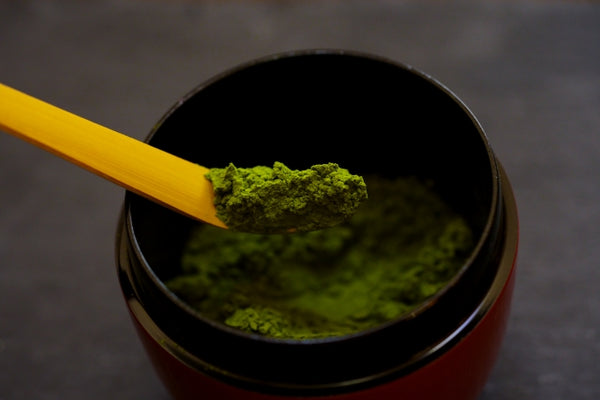Cyber Monday - Super Matcha Sale 2023 Posted on 27 Nov 19:11 , 0 comments
☆☆☆CYBER MONDAY☆☆☆
Our Cyber Monday sale is here
now's your chance to grab what you missed.

Our online store is opening a new door
We're excited to announce that Japan Post resumed shipping to USA, Canada, UK, France and Germany! Now customers in those countries can shop and get free shipping option. :)
We will continue to offer the Best Organic Matcha Green Tea and Hojicha Powder for Matcha Lovers and Hojicha Lovers!

Understanding the differences of Japanese Green Teas.
The title of this article might sound a bit confusing and you might be thinking “isn’t matcha a green tea?” Yes, it is! But even though matcha may be classified as a green tea, there are some differences between the two. For starters, not all green teas can become matcha. Matcha and green tea both come from the same plant, Camellia Sinensis. However, they differ in their cultivation, processing, appearance and preparation. Let’s learn more about the differences between matcha and green tea.
Continue to read Here! (Lu Ann, a tea enthusiast and writer based in Ontario, Canada.)
Have you ever tried Iced Matcha Green Tea!
Many people think that Matcha ought to be drunk in Hot but try Iced Matcha!
You would be surprised by the refreshing taste. The best drink in Summer!

Iced Matcha Green Tea is a perfect drink in summer! It is very easy to make and super healthy! There are so many health benefits of Matcha Green Tea. Try our premium grade Organic Matcha from Kyoto, Japan. Find the best Matcha Here!

- As of July 7th, more than 150 affiliates ( matcha lovers ) have joined us ! -
Grace & Green Welcomes New Affiliates
We have started working with matcha lovers worldwide!
Grace & Green sells premium organic matcha green tea from Japan and related accessories.
Matcha Green Tea is still new to many people outside Japan. However, it is getting very popular worldwide and many people are trying to find the better ones.
Why Grace & Green?
In Japan there are so many matcha producers (brands) and they produce many grades of Matcha Powder. Among them, we offer only the best matcha. Grace & Green delivers the truly high quality matcha powder from Japan to our customers' door. And what is more, our matcha is certified organic Matcha (JAS certified)
We Offer:
We hope to make many good relationships with matcha lovers worldwide. :)
Become A Grace & Green Affiliate Today! Click here for making your account.

Sorori Tea Sisters reviewed our Luxury Matcha! This Luxury Matcha had a different name before. The name is Morning Organic Matcha. Sarah, a member of Sorori Tea Sisters, who live in Norfolk in the UK reviewed our Luxury Matcha (Morning Organic Matcha). Please read her review Here!

UNYtea Guy gave us 4.5 points out of 5 for our premium organic matcha green tea. please read their tea blog Here!
Do you know Hojicha Latte? Many people know cafe latte but don't know Hojicha Latte yet. The color of Hojicha Latte looks like cafe latte but the taste of Hojicha Latte is very different from cafe latte. Hojicha is made by roasting Japanese green tea leaves. Hojicha has a strong toasty aroma and caramel-like flavor. Find the best Hojicha Powder Here!

In recent years Matcha Green Tea has become increasingly highlighted all over the world as a health beverage since its disease preventing and health promoting effects have been widely reported.
There are many substances in tea that are good for the body and below we will introduce a few of them.
Catechines
Theanine
Caffeine
Vitamin C
Minerals
Saponin
Water-insoluble components